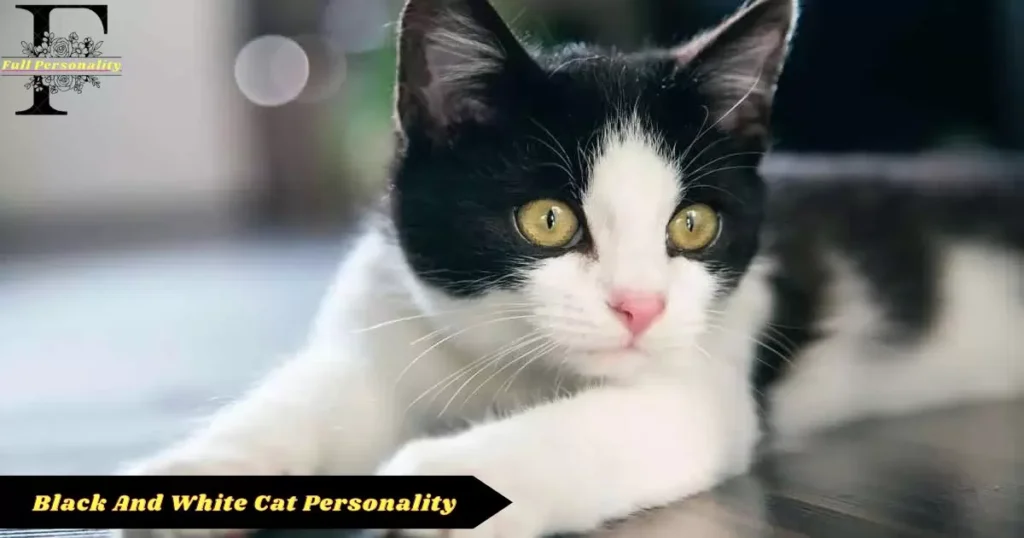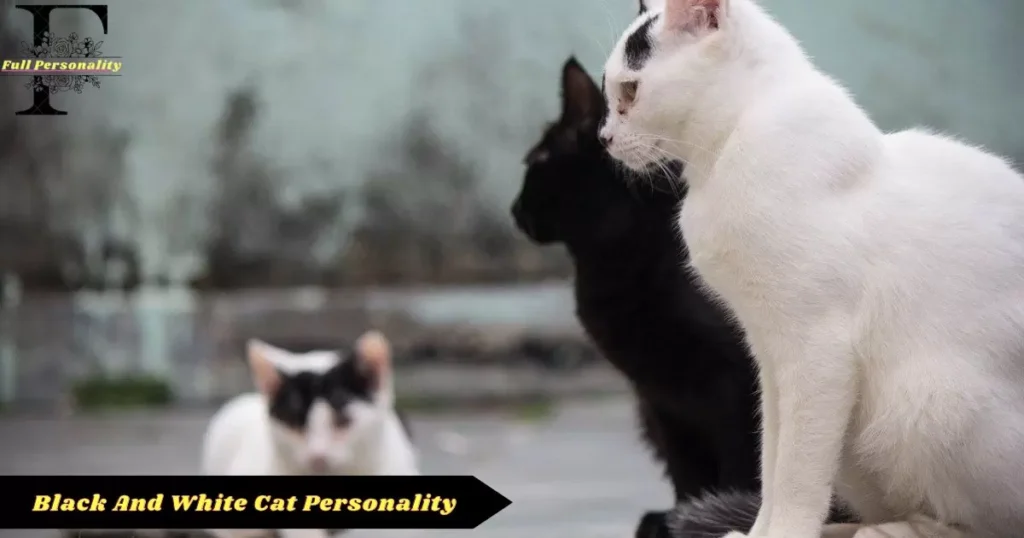Cats make delightful pets due to their charming personalities. While every cat has its own unique character, there are some common personality traits that cats as a species tend to exhibit. Understanding a cat’s personality can help owners better meet their needs and form a strong bond.
All cats need affection on their own terms. While some cats are very social and enjoy attention, others are more reserved and independent. It’s important for owners to respect their cat’s boundaries and allow them to initiate interactions. Play is also crucial for cats of all ages. Cats enjoy chasing toys and playing interactive games with their owners, which helps them get exercise and mental stimulation.
The 5 Common Cat Colors and Their Personalities
Cat coat colors can provide insight into potential temperament traits. Let’s explore the five most common cat coat colors and any personality tendencies typically associated with each.
You may want to Read: Red, Blue, Green, Yellow Personality Test
Tabby Cats
Tabby coats feature distinctive stripes, swirls, or spotted patterns. Tabbies tend to be outgoing, curious, and playful. As skilled hunters, they enjoy interactive toys and games. Males can be aloof, while females often bond closely. Tabbies usually adapt well to families with children and other pets.
Black Cats
Black fur coats black or chocolate brown. Black cats possess a calm and gentle demeanor. They prefer quiet time curled up but will also play. As a breed, they bond tightly to their families. Myth says black cats are unlucky, but many consider them good luck instead. Their reserved personalities suit living with respectful owners.
Ginger, Orange and Red Cats
With brilliant orange-red coats, these cats tend to be energetic, lively, affectionate, and talkative. Their noisy meows easily attract attention. Gingers thrive on interaction with loving owners through play, petting, and encouraging words. Though active, they rest comfortably indoors.
Black and White Cats
Also called tuxedo cats for their resemblance to a gentleman’s formalwear, these bicolored kitties show great versatility. Melodious purring balances their bold curiosity and mischievous play. Capable of adapting to any home, tuxedos bond warmly yet remain poised. Their personalities depend more on genes than coloring alone.
Blue, Cream, Gray, and Lilac Cats
These softer pastel coats indicate a diluted dilution gene. Temperaments range but overall these rare beauties appear mellow yet affectionate. They form connections with few people or other pets. Cream kitties purr contentedly in laps and enjoy gentle handling. Gray and blue coats signify even-tempered placidity perfectly suited for quiet homes.
11 Fascinating Facts About Black and White Cats
Let’s explore more intriguing tidbits about those charismatic tuxedo cats.
You may want to Read: Personality step by step
Greens
- They come in a variety of coat patterns from classic tuxedo to harlequin to van styles.
- Despite their famous coloring, tuxedos do not qualify as a purebred cat breed.
- Nicknames like “cow cats,” “panda cats,” and “bear cats” playfully refer to their iconic black-and-white appearance.
- Emerald green eyes often gaze from their monochrome faces, though kittens are born blue-eyed.
- Independent yet trainable, tuxedos show off robust “tortitude” when they wish and sweet affection when the mood strikes.
- One famous political cat, Hickory, ran for mayor in X town in 1988. He won too.
- Iconic cartoon and animated tuxedo cats include Sylvester and Hello Kitty.
- Real life celebrity tuxedo cats gained fame, like Miss Stubbs who became honorary mayor.
- While not a distinct breed, tuxedos display dominant and recessive genetics fascinating to students of heredity.
- The loudest purring cat ever recorded at 67.7 decibels held the standard tuxedo coat pattern.
- Simon, a decorated WWII era cat who served on ships, sported the classic tuxedo look.
Types of Black and White Cats
While not a pure breed, the tuxedo pattern occurs across many pedigree breeds as well as domestic short and long haired varieties. Here are seven common breeds of black and white felines:
British Shorthair: Sturdy and stocky, these gentle giants come in any color including black and white. Friendly and loyal, they bond closely.
Cymrics: Originally from Wales, these are muscular yet lithe natural predators. Independent outdoor cats in their homeland, Cymrics maintain an affectionate bond when indoor pets.
Maine Coon: The largest domesticated breed, Maine Coons come in many patterns including classic tuxedo. Calm and tolerant, they thrive as family cats.
Munchkin: Known for their tiny legs, Munchkins also appear in tuxedo coats. Playful yet lap-loving, their small size suits smaller spaces.
Japanese Bobtail: Unique for their stubbed tails, these cats show intelligence in their bright eyes and expressive faces. Calm and social, their independence belies intense affection.
Siberian Forest Cats: Sturdy and thick-coated to survive Siberia’s harsh winters, they bond gently as indoor companions. Tuxedo coats drape sleek frames.
Persian: Iconic for their signature pushed-in faces and long silky coats, Persians appear as tuxedos too. Calm and loving, they enjoy quiet play and petting.
12 Fun Facts About Black and White Cats

Here are a dozen intriguing facts about the black and white tuxedo coat pattern in felines.
- Over half of all domesticated cats fall under the black and white coloring worldwide.
- The same tuxedo cat who held the record purr lived to age 27, almost twice the average lifespan.
- While associated as a breed, tuxedo is not truly a breed but a coat pattern found across random breeding.
- Tuxedo patterns include classic black and white plus other tabby markings like mackerel, spotted, and ticked variations.
- Domestic shorthair and moggies, though not pedigrees, can certainly be tuxedo coated cats.
- Emerald green eyes usually accompany their black and white coloration like a classic gentleman’s color scheme.
- Newborn kittens have light blue eyes which change color between 4-6 months to their familiar green.
- Politics have seen mayoral pet cats like Stubbs and Sweet Tart who gained fame for their tuxedo coats.
- From classic patterns to harlequin patches, a wide variety of black and white coat designs exist naturally.
- Tuxedos occur among both the most common short-haired breeds and fancy long-haired lineages.
- Iconic cartoon cats from Felix to Sylvester reinforced the tuxedo coat’s cultural longevity on screen.
- Their distinctive coloring grants tuxedo cats mention in folklore as lucky feline figures.
What is a Tuxedo Cat?
As one of the most loved coat patterns in felines worldwide, let’s explore the anatomy and attributes of the tuxedo cat.
Size: Tuxedo cats appear in all sizes from teacup to giant depending on breed genes. On average domestic shorthairs measure 10-15 inches long outside tail and weigh 7-12 pounds.
Personality: Calm, confident and cleverly clever, tuxedos show great versatility. Independent yet people oriented, they bond tightly without clinginess. Playful when young, tuxies mellow to gentle souls.
Coat: The hallmark black and white (or sometimes gray) fur sheds seasonally in most. Some long-haired breeds like Persians retain their silky coats year round.
Health: As a coat variety not a pure breed, tuxedo cats show average robust wellness. DCM heart defects appear in some pedigree lines. Dental, eye and thyroid issues also require attention.
Lifespan: Indoor tuxedo cats receiving excellent care live 12-18 years on average with the potential for even longer lives especially in small breeds.
Temperament: Calm yet playful souls, tuxedo cats suit any household seeking a devoted friend. They eagerly greet adoring families after independent adventures.
In summary, tuxedo cats appeal internationally for their iconic expression and versatile loving natures. Their adaptability ensures happiness in pets and homes of any style.
Why Are Black and White Cats Special?

Let’s explore how coat color impacts cat temperament and why tuxedo cats hold such affectionate appeal.
Personality: Calm confidence and an independent spirit balance tuxedo cats’ sociability. Versatile traits suit any household.
Appearance: Their hallmark black and white (or gray) coats resemble a gentleman’s formal attire, hence their nickname.
Famous alumni: Iconic cartoon and real world tuxedo cats like Felix and Stubbs won fame for their distinctive looks and lovable natures.
Studies show genetics rather than coat color primarily determines feline personality. However, anecdotally tuxedos seem specially predisposed to balance playful curiosity with gentle affection making them praiseworthy pets. Their versatility and visual appeal ensure black and white cats remain beloved worldwide.
FAQs
Do black and white cats have more personality?
Black and white cats don’t necessarily have more personality, but their striking coat often suits calm yet playful temperaments. Their versatility allows adapting to any home.
What is the character of a black and white cat?
Black and white cats, also called tuxedo cats, tend to be calm, confident, clever, and playful souls. Independent yet affectionate, they bond tightly to their favorite people without clinging.
What does a black and white cat symbolize?
In some cultures, black and white cats symbolize duality, balance, and wisdom. Their distinctive coloring also associates them with luck, prosperity, and problem-solving skills due to their clever personalities.
Which color cats are the friendliest?
Generally orange, ginger and tortoiseshell cats tend to be among the most affectionate and social according to some studies. However, every cat has an individual personality. Black and white cats often balance playfulness with lifelong loyalty.
What is black cat’s personality in person?
Black cats tend to be gentle, reserved souls. While enjoying affectionate play, their independent calm also suits respectful homes. Despite old superstitions, many owners find black cats to be especially loving, intelligent companions.
Are black and white cats loyal?
Yes, black and white cats often form very strong, long-lasting bonds with their favorite people. While retaining independence, they show devoted affection and loyalty to loved ones in their family for life.
Conclusion
Black and white cats showcase gentle yet playful personalities through their unique coloring. Calming confidence and versatility ensures happiness in homes of every style. Whether favoring affectionate play as kittens or mellowing with pride as mature adults, their loving natures bond tightly with adoring owners through life.
Striking coats pair perfectly with caring souls beloved worldwide, exhibiting the balance and wisdom such colors symbolize. For devoted pet parents seeking devoted feline friends, black and white cats make splendid companions for every stage.

